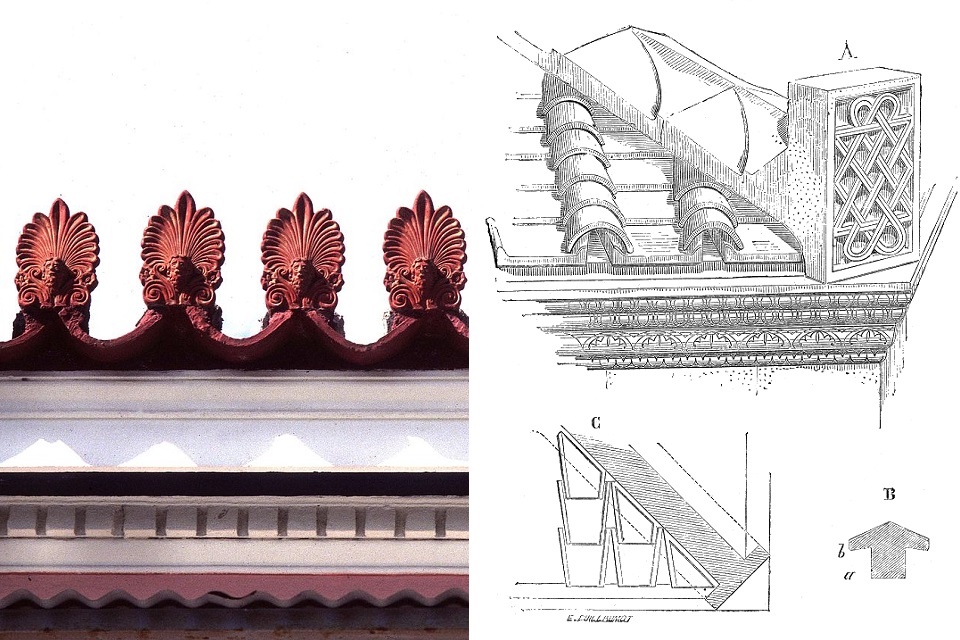Antefix


An antefix (from Latin antefigere, to fasten before) is a vertical block which terminates the covering tiles of a tiled roof. In grand buildings the face of each stone ante-fix was richly carved, often with the anthemion ornament. In less grand buildings moulded ceramic ante-fixae, usually terracotta, might be decorated with figures or other ornament, especially in the Roman period. By this time they were found on many large buildings, including private houses.
Etymology
From Latin antefixa, pl. of antefixum, something fastened in front, from antefixus, fastened in front: ante-, ante- and fixus, fastened, past participle of figere, to fasten.
The antefix (from Latin antefixus) or the end tile is a figuratively or ornamentally decorated clay or stone tile.
The antefix was applied to Roman, Etruscan and Greek temples and professional buildings on the lowest roof tile layer of the eaves and thus closed the front opening of the cover tiles. Normally, the antefix for this purpose was worked in the back in the form of roof tiles and painted multicolored on the decorated side of the show.
On the long sides, roof tiles usually appear when no lateral sima was used in the architecture (Parthenon); on the narrow sides they can only be found near the Etruscan temple with its open gable field. In the Greek area antefixes were preferably made of marble in the form of a palmette, figurative examples are relatively rare. In the Old Italian area, on the other hand, the variants of clay dominate, especially terracotta. The choice of motif is varied: For example, heads of mythical creatures or gods (Medusa, Maenade, Silenus and Juno), as well as bodies of animals (lions, deer) and hybrid creatures (centaurs) were depicted.
Source From Wikipedia